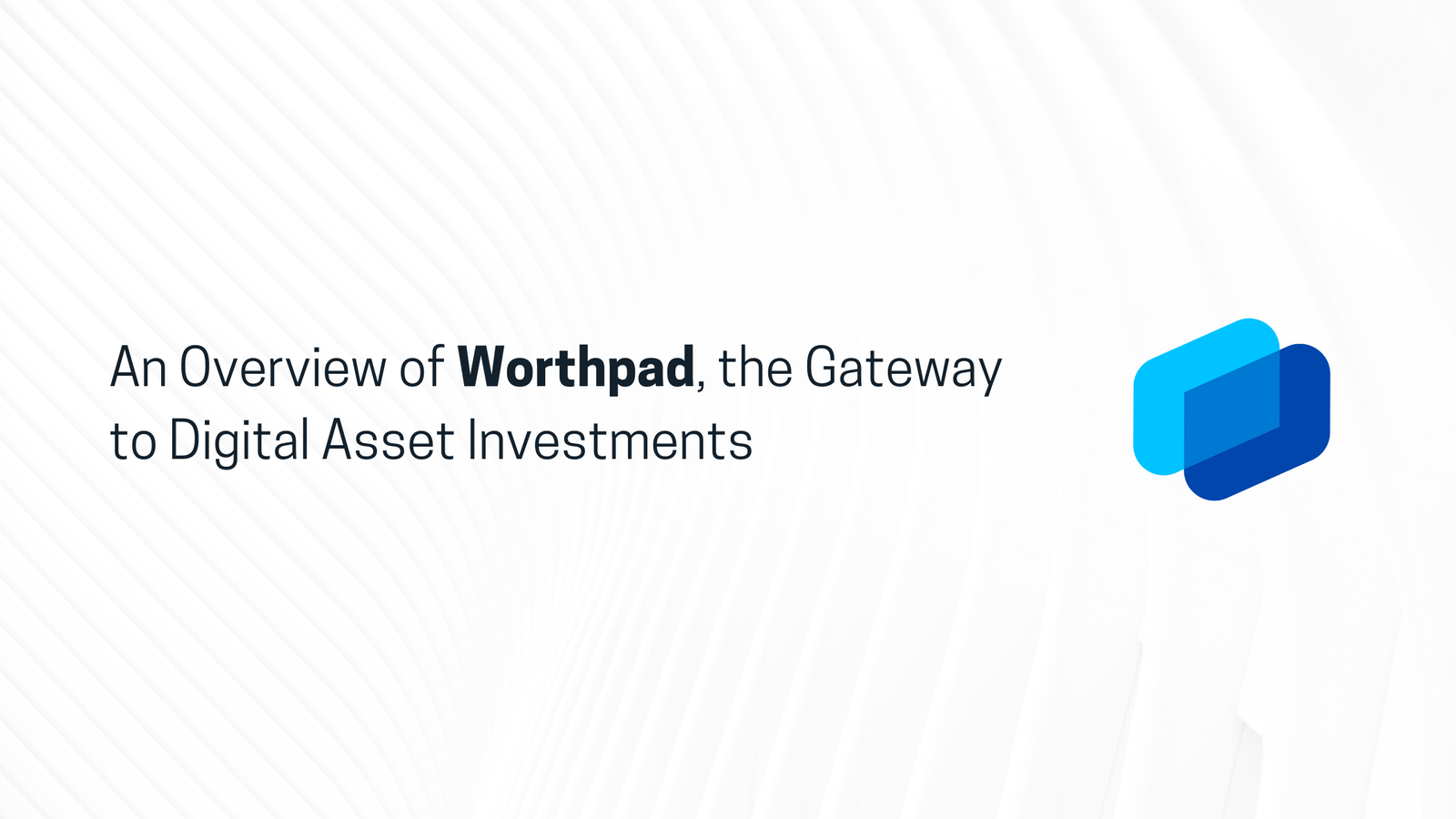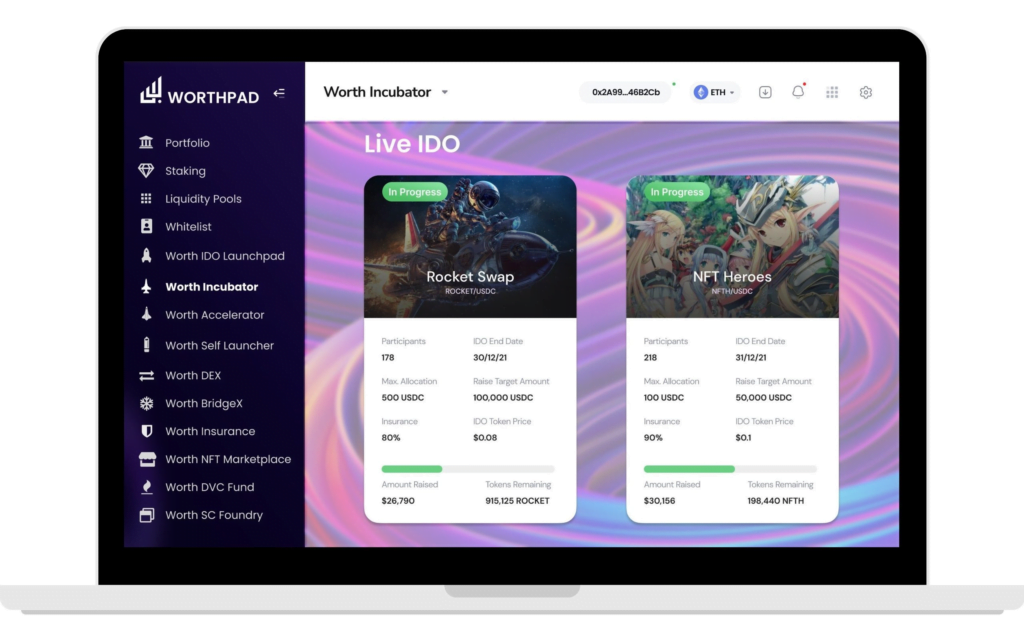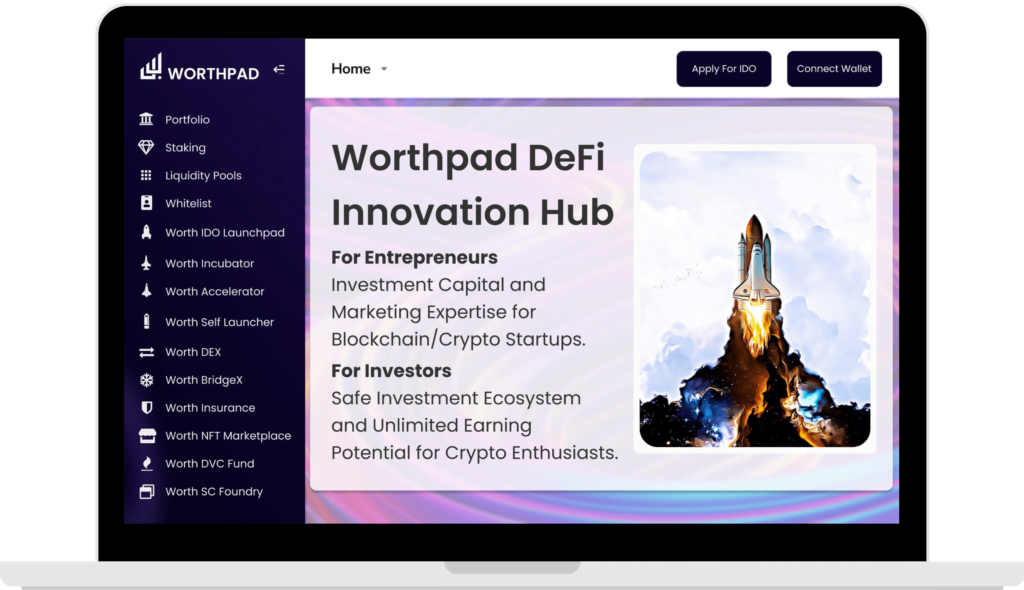An Overview of Worthpad, the Gateway to Digital Asset Investments

Worthpad represents an innovative decentralized platform that makes investing in DeFi and crypto projects easy and accessible to the community. The ecosystem is built around six components which cater to different goals. As such, each feature on Worthpad focuses on bringing several solutions to DeFi and the entire crypto space.
The building blocks include the Worth DVC Fund, Worth DEX, Worth Insurance Treasury, Worth Smart Contract Foundry, $WORTH token, and the Worth IDO Launchpad.
Today, the crypto market hosts a wide range of digital asset investment protocols. However, several challenges end up affecting both investors and project owners. Worthpad hopes to limit these barriers by introducing an investment product to the community.
At the same time, the project plans to stimulate the growth of new crypto projects. Here’s what users can expect from Worthpad.
What are the Features?
Some of the features found on Worthpad include:
Worth IDO Launchpad
According to the platform, crypto entrepreneurs usually lack access to investment capital. Worthpad intends on providing a convenient way of conducting fundraising activities for digital asset projects.
New and existing crypto projects can receive the support they need to grow through the Worth IDO Launchpad. In essence, the launchpad helps platforms to generate investment funds. Incubation also offers project founders marketing and advisory services, which could be helpful when building a user base.
This needs to be reworded. In Worthpad’s IDO launchpad, new project owners can access several products such as the Worth Incubator.
Therefore, Worth Incubator provides marketing/PR services, auditing, and expert advice. The incubator further offers projects with investment capital that assists in building an adequate user-base.
Worth accelerator is yet another product found in Worthpad’s IDO launchpad.
Under the accelerator, startups with a working MVP receive various resources and mentors who will contribute to the projects’ overall growth. Worth Self Launcher is the third and last product which allows startups to gather investment capital from the community. However, project developers have to follow Worthpad’s guidelines if they wish to generate funds through the community.
One condition requires projects to use the ecosystem’s Worth Smart Contracts Foundry for developing and applying smart contracts.
The remaining conditions advise projects to contribute to the Worth Insurance Treasury and participate in the milestone based funding.

Worth Smart Contract Foundry
Here, projects have the chance to use and apply Worthpad’s smart contracts. Worth Smart Contracts helps non-technical founders deploy smart contracts without any technical know-how. Moreover, project owners can design their token launch utilizing a drag and drop interface.
On most occasions, dishonest users can attempt to manipulate smart contracts especially since they are open-source codes. In that regard, Worthpad provides developers with an audited and secure smart contract code.
Crypto projects building on Worthpad’s smart contract foundry are safe from rug pull and scam incidents. The foundry further helps secure LPs from several manipulations such as oracle price exploits and flash loan attacks. Among the blockchains that the foundry may operate with include Ethereum, Binance Smart Chain, and Polkadot.
A cross-chain swap feature might also feature in the future. The cross-chain swap will assist in improving blockchain interactions by making the entire ecosystem interoperable.
Worth DVC Fund
Worth DVC Fund operates as an investment engine for Worthpad’s stakers. In simple terms, users who stake their WORTH tokens have a chance of earning from their holdings. It, therefore, presents investors with a similar earning mechanism used in traditional venture capital.
The DVC Fund works towards supporting projects showing immense growth potential. What’s more, crypto protocols that can generate a significant ROI over time also qualify for the DVC Fund investment. The DVC Fund takes up a 10% transaction tax on any trades made with WORTH tokens.
The DVC Fund smart contract can gather continuous funds to boost every incubated project through the tax mechanism. After pooling funds into the contract, the launchpad will invest in other launchpads teaming up with Worthpad’s launchpad.
There is a voting process that may involve the community taking part in choosing the best innovative projects. Once selected, the platform will get financial support from the VC Fund through the IDO Launchpad.
In some cases, Worthpad might not use all the funds available in the DVC Fund engine. Hence, the remaining finances will cater to WORTH users staking their holdings.
Worth DEX
A decentralized exchange (DEX) functions as a platform where users can trade their digital tokens. Worth DEX provides similar services to traders while it runs on the BSC and Ethereum blockchains.
New users can easily browse through the DEX since it implements a friendly interface. Other than that, Worth Dex uses a liquidity level similar to what centralized exchanges offer. It also works as an aggregator that monitors for the best trade deals across multiple liquidity sources.
Generally, the exchange intends to create a peer-to-peer trading experience with fast transaction processes and higher liquidity. Other features available in the DEX include security from frontrunning and bot interruptions in an IDO launch.

Worth Insurance Treasury
Without a doubt, some crypto projects usually end falling after they manage to launch. The Worth Insurance Treasury ensures that the users’ investments remain intact if a particular project fails.
In that regard, Worthpad requires every project launching with the platform to contribute to the treasury. The contribution amount may vary depending on the funds that a crypto project raises.
Besides, the amount remains locked in Worth Insurance Treasury until the project team completes the described milestone. Once the startup meets all requirements, the insurance treasury unlocks and releases funds to the project’s team.
As a bonus, the insurance treasury plans on partnering with yield farms, DEXs, and popular wallet providers. Teaming up with these platforms allows Worthpad to design a DeFi insurance strategy that suits its investors.
To sum up, Worth Insurance Treasury extends risk management services to users investing in a failing project.
WORTH Tokens
Like any other platform, Worthpad contains its native asset known as $WORTH.The native token is responsible for powering all transactions in the Worthpad ecosystem.
WORTH has a total supply of 100 Trillion tokens, targeting a hardcap of $8,000,000. Worthpad uses a unique tax mechanism that ensures WORTH’s value remains higher.
In every transaction, the project deducts a 5% tax, 2.5% goes to the DVC Fund, while the remaining 2.5% goes to the liquidity pool. The taxation is necessary because it protects against pump and dump scenarios that may affect WORTH tokens.
Future Developments
According to the roadmap, Worthpad has several developments which may run up to 2023. By 2022, the platform hopes to accelerate and incubate close to 40 digital asset projects.
Worth Smart Contract Foundry for BSC, Ethereum, and Polkadot may also emerge in 2022.
Worth IDO Launchpads for Ethereum and Polkadot may appear in 2022, launching in different versions over time up to 2023. Finally, Worthpad’s Insurance Treasury Fund could roll out in Q1, 2021, while the second version is set to launch in Q1, 2023.
Improving the investment security of users is one of Worthpad’s primary missions. New users can find it easy to select worthwhile projects that suit their investment needs through the platform.
As a result, projects can build a large community of digital asset investors. Such innovations like Worthpad facilitate the exposure of crypto assets and increase the global acceptance of digital currencies.
For more information and updates, visit Worthpad at:
Twitter: https://twitter.com/worthpad
Telegram: http://t.me/worthpad
Medium: https://worthpad.medium.com/
Disclaimer: This article is not intended to be a source of investment, financial, technical, tax, or legal advice. All of this content is for informational purposes only. Readers should do their own research. The Capital is not responsible, directly or indirectly, for any damage or loss caused or alleged to be caused by reliance on any information mentioned in this article.
Originally Published at
The Capital

Comments